Review: Motorola Moto G6
May 30, 2018, 1:04 PM by Eric M. Zeman
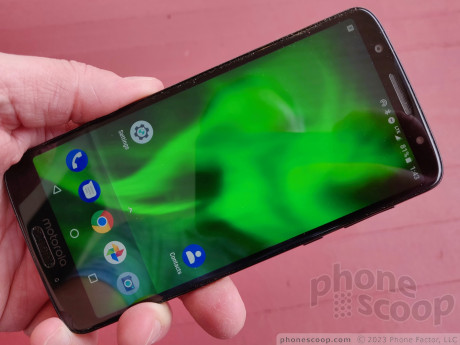
Motorola's G series phones have now reached their sixth generation. The Moto G6 sees Motorola taking the best design ideas from its mid-range X series and bringing them down to its more affordable G series. This Android phone combines good looks and solid performance in a value-priced piece of hardware. Here is Phone Scoop's review of the Motorola Moto G6.
Hardware
Is It Your Type?
The Moto G6 is an affordable Android phone that merges an appealing design with mid-range specs and Motorola's tasteful software tweaks. This phone is for those who want or need a sub-$300 phone that delivers a lot of bang for the buck.
Body
Motorola's G-branded phones started life as colorful polycarbonate devices with lots of character. Last year's G5 saw the complete erosion of that character with bland, conservative shells. Thankfully Motorola is breathing life back into the G series by ditching last year's look and replacing it with an appealing glass-backed design similar to the X4. This is a win for consumers who appreciate good looking, high-quality hardware.
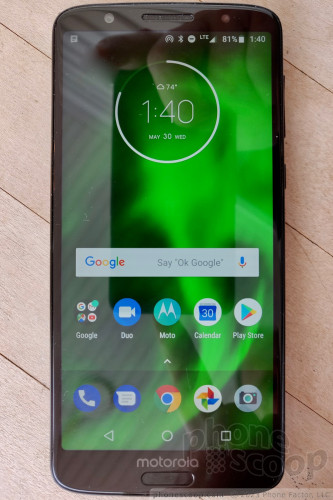
The G6 puts two glass panels on either side of a frame that feels like plastic (but is metal) that runs around the outer edge. The rear panel features steep curves along the side edges where it fits into frame. The frame is thicker at the top and bottom and thinner along the sides to accommodate the curved rear glass. The front is formed by 2.5D curved glass, which means it is rounded off where it meets the frame.
The phone comes in black, dark blue, and "blush" (pinkish). The G6 is the classiest G yet.
Because the phone adopts the 2:1 screen shape, the chassis is tall and narrow. It's well under 3 inches wide, which really helps with hand fit. I was able to hold and use the phone comfortably. Like most modern phones, it's difficult to reach the entire display without adjusting your grip on the phone. This means you'll sometimes find yourself using both hands to operate it. Those with the smallest hands may find it is too much phone for them. Most everyone else should have no problem using the G6. At 8.2mm, it's reasonably slim. It slips into pockets easily and it's light enough that I often forgot it was there.
The materials are good for a phone at this price point. The glass isn't the most luscious I've ever rubbed with my thumb, but it still gives off an air of quality. I wish the frame didn't feel so much like plastic. It is coated in a weird glossy paint that comes across like plastic. It doesn't feel cheap, and yet it doesn't feel particularly strong either. It's not a rugged phone. The chassis is assembled tightly and there are no gaps in any of the seams.
The G6 is not waterproof. Like many Motorola phones, it employs a splash-proof nanocoating on the internal components to prevent short-circuiting should you accidentally splash it. It can handle rain and sweat, but not an afternoon swim in the pool.
The G6 sees Motorola making progress in reducing bezels. With the 2:1 screen shape, Motorola reigned in the side bezels and also slimmed down the forehead and chin. There's still more bezel than I want to see, but at least Motorola is moving in the right direction. You'll spot a fairly large earpiece grille (which doubles as the speakerphone) above the display along with the selfie camera and flash. The phone's fingerprint reader is crammed into the chin below the screen. The reader is indented just a bit and doubles as a "home" button. It works well.
The volume and lock buttons are located on the right edge of the G6. The lock key is small-ish and has a ridged texture to help make it stand out. All of the side keys have a nice profile, and excellent travel and feedback.
The SIM tray is tucked into the top edge and is a bit of a pain. No matter what SIM tool I used, the tray barely pops out of its slot at all. You have to finagle it out with your fingernails. It's one of the fussier SIM trays I've encountered. Granted, most people will only need to interact with it once or twice.
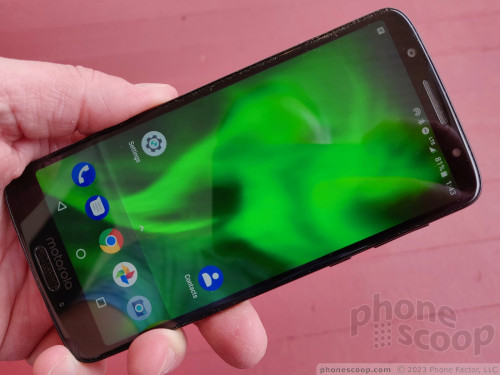
Motorola opted for USB-C on the G6, which is a nice upgrade compared to last year's G5, which had microUSB. The USB-C port is on the bottom edge, along with a 3.5mm headphone jack.
The rear panel is a simple piece of glass from top to bottom. I dig the generous curves along the sides, which help with hand fit. Yucky fingerprints are a bit more visible than I want them to be, though that's par for the course with glass-backed phones.
The camera module cracks me up. Like that of the X4, it's a raised circle that's about the size of a quarter. The two lenses are side by side with a dual-LED flash below. The arrangement looks identical to that of the zany-faced emoji and makes me laugh.
Though the basic appearance and location of the camera module resembles that of the Moto Z series, it is important to note that the G series is not compatible with the Z series' Moto Mods.
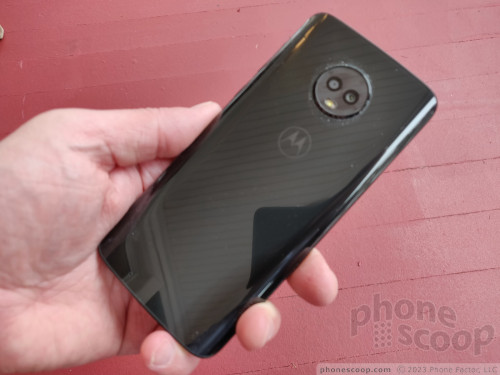
Like many of today's phones, the glass rear panel cannot be removed and thus neither can the battery. It's all sealed up tightly.
The Moto G6 is a big step forward for Motorola's G series. The G6 outguns competing phones in looks, feel, and build quality. LG, Samsung, Blu, Coolpad, and Alcatel have work to do to keep up in this price class.
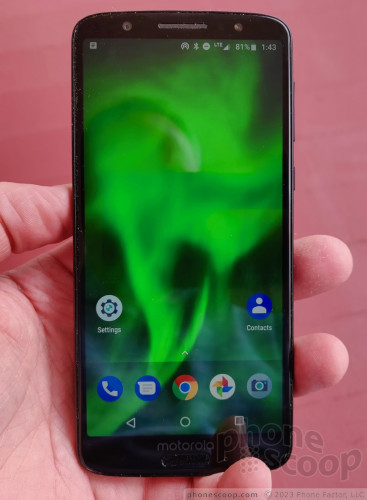
Screen
The Moto G6's screen measures 5.7 inches across the diagonal with full HD+ (2,160 x 1,080) resolution. It's an LCD display with a pixel density of about 424ppi, which means it's nice and sharp. I was pleased with the amount of light the phone puts out. As long as you don't have too many fingerprints gunking up the glass, outdoor viewability is quite good. Colors are accurate. Viewing angles aren't great. The screen dims noticeably when tilted side-to-side. Still, the G6's screen does all it needs to for this price point.
Motorola's software allows you to tweak the display's color profile to suit your own tastes, and like most modern phones you can set the blue light filter (aka, night mode) to go into effect to reduce eye strain.
Signal
The Moto G6 has excellent support for most U.S. wireless networks. You can buy an unlocked version and take advantage of some newer LTE bands deployed by AT&T (29 and 30) and T-Mobile (66). We tested the unlocked device on Verizon's network in and around New York City and came away impressed. (It's officially certified by Verizon for their network, and Verizon will soon sell the phone directly.)
The phone remained on Verizon's 4G network the entire time I tested it. It never dropped down to 3G or lost the signal. It connected all calls on the first dial, and kept calls connected over miles of highway driving. LTE data speeds are limited by the Cat 6 modem, but it still does a respectable job. The phone is more than quick enough for updating email, browsing the web, scrolling through media-rich social networks, and more. You can easily stream standard-definition audio/video from the likes of Spotify and YouTube without stuttering or unwanted pauses. Streaming high-def content led to some buffering in weak signal areas.
The G6 performed about as well on AT&T/T-Mobile. Call connectivity was spottier when used on AT&T, but T-Mobile delivered better LTE speeds when compared to Verizon.
Sound
Sound quality is shockingly below average. I was not impressed with voice clarity through the earpiece or the speakerphone (which are essentially the same thing). I experienced lots of crackling, pops, and other noise during calls no matter which network I tested the phone on. Cranking the volume up is necessary in loud spaces, but it leads to lots of distortion in the earpiece. It's not the best experience. People I spoke to through the phone said I didn't sound very good.
Volume via the speakerphone is acceptable for indoor or in-car calls, but no so much when you're outside or in noisy spaces.
Guess what? Playing music or video through the speaker produces the same snap-crackle-pop experience with lots of distortion at higher volumes. This is a major misstep from Motorola.
Battery
Motorola doesn't fool around when it comes to battery life. The Moto G6 packs a 3,000mAh battery, which is on par with the competition. The lithium ion power cell delivers the goods. The phone consistently pushed from breakfast to bedtime over a week of testing. It wrapped up most days with a respectable remainder of 20-25% capacity, no matter how hard I pushed the phone. I think most people should be able to get through a day with this phone.
The G6 has the basic Android battery saver tool aboard, which can be toggled on manually or set to turn on automatically when the battery reaches 5% or 15%. It helps a little.
The Moto G6 does not support wireless charging but it can handle rapid power-ups with the included wall socket. Motorola calls its charging tech TurboPower. The phone can gain 20%, which is good for several hours of use, in just 15 minutes.
Bluetooth, GPS, NFC, WiFi
The Bluetooth did well enough. I was able to pair it successfully with a speaker for blasting tunes, a PC for passing files, and my car for in-transit calls. The connection remained tight most of the time, but I experience hiccups in reconnecting to previously paired devices. I sometimes had to 'forget" the Bluetooth accessory in question and re-pair. That gets old after a while.
The GPS radio performed up to spec. It handled real-time navigation without stressing the phone too much.
There's no NFC.
The wifi radio did its job well.
For terrestrial radio lovers, it's worth noting that the Moto G6 has an FM radio and it works well as long as you have a pair of wired headphones handy.
Software
Lock Screen
Motorola offers one of the better lock screen experiences on Android phones. It's all managed in the Moto App. Moto Display is what Motorola calls its "ambient display." It wakes the screen regularly with incoming notifications if you wish.
The G6 re-introduces a neat trick: the ambient display wakes up whenever you reach for the phone. You can just wave your hand over it and the screen will show you the clock and your notifications. This feature was once found on high-end Moto phones using infrared sensors. Now, using a clever new ultrasonic sensor, they're able to put this same handy feature on more affordable phones.
There's also a new set of control gestures for accessing lock-screen information. Touch-and-hold the screen to see the most recent notification, touch and swipe up to see all notifications, touch and swipe down to dismiss notifications, or touch and swipe sideways to ignore them. It doesn't take long to master them.
If you press the screen lock button, the display wakes fully to show the clock, wallpaper, and notifications listed below the clock. There are shortcuts to the Google Assistant and camera on this screen, though these can't be customized.
The G6's fingerprint reader, positioned below the screen, performed very well. It was a breeze to train, and consistent at recognizing fingerprints on the first touch.
The G6 also includes Moto Key, which we first saw last year. This tool lets you use your fingerprint to sign in to apps and web sites. You can even use it to unlock nearby Windows PCs and sign into PC-based apps. It supports just about any mobile app. It's pretty straightforward to set up and use.
Home Screens
The G6 ships with Android 8 Oreo with Motorola's useful adjustments and additions.
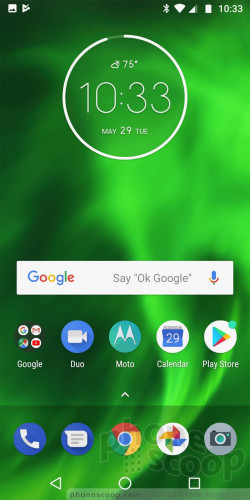
The main home screen panels are simple to adjust and customize with your own apps and shortcuts. The G6 includes a personalized Google feed as the left-most home screen panel. As long as you're signed in to your Google account, this panel shows you local weather, calendar appointments, travel times to work/home, and so on.
The app drawer, notification shade, Quick Settings tool, and main settings screens are all standard Android, and work accordingly. Apps are listed alphabetically in the drawer, with five app suggestions lining the top. The app drawer doesn't support folders, nor does it allow you to hide apps. There are no themes or other fancy interface tricks on board, which is fine as far as I'm concerned.
Moto Actions are hand gestures that serve as shortcuts for certain some tasks. For example, drag three fingers down the display to take a screenshot, make a chop motion with the phone twice to turn on the flashlight, pick it up to stop ringing, and much more. The Voice Assistant is there, too, for your spoken commands. These are all easy to customize via the Moto App.
As for performance, the Moto G6 has a 1.8 GHz Snapdragon 450 processor with 3 GB of RAM and 32 GB of storage. The 450 delivered consistent performance across the board. I didn't see or experience any hiccups or sluggish behavior.
Camera
Motorola's quick wrist-twisting gesture is the best, fastest way to open the G6 camera app. This works whether or not the phone is locked. You may also open the camera from the lock screen shortcut. The app takes one-quarter of a second too long to open as far as I'm concerned.
The camera app is deceptively simple-looking. The controls let you adjust HDR (on, off, auto), flash (on, off, auto), timer, and live photos, as well as turn on manual mode.
The manual mode gives you control over focus, white balance, shutter speed (just up to a quarter-second), ISO, and exposure. Using the dials, you can adjust one at a time or all of them at once. It's relatively easy to put to work.
A selector next to the shutter button lets you access the secondary shooting modes. These include portrait, cutout, spot color, panorama, text scanner, and face filters.
The portrait mode, meant specifically for people, uses depth-of-field data generated by the two lenses to create in-focus and out-of-focus regions within the photo. Your subject has to be close, (within a few feet,) and the background has to be at least several feet further away. The mode is a little slow.
The cutout tool works similarly but does what its name implies. Put something in the viewfinder and make sure there's some distance between it and the background. It will then focus on the subject and completely remove the background (see the photo of my arm). You can then add another photo to the background if you want to have some fun.
We've seen the spot color feature before. You select the color in the viewfinder you want to keep. Once you select the color, everything else in the photo turns black and white. It's great for making subjects pop, like a yellow flower or red piece of fruit.
Face filters are just what the name implies. It includes a narrow area of focus in the viewfinder where it expects you to center on a face. It's best put to use with the selfie camera. It includes options like sunglasses, unicorns, rainbows, and space helmets. It's a cinch to use.
The text scanner is for scanning text, such as restaurant menus and business cards. It's a simple text scanner. It will take text and turn it into a PDF or text file. It doesn't do anything to help you search or translate with that text.
The video camera includes its own tools: slow-motion, time-lapse, and face filters. They work well.
Last, but not least, the G6 includes Google Lens, which performs Google searches based on what you shoot. For example, I took a shot of my PC's keyboard. Not only did the G6 and Google Lens tell me it was in fact a PC keyboard, but that it was an Apple wireless keyboard (accurate) complete with links on where to buy one. Truly, we're living in the retail future (dystopia).
The layout of the camera app is fine for novices and experts alike. The G6's processor and RAM combo seem to fall a little short when it comes to the camera. It's the one app on the phone that runs a touch slow.
Photos/Video
The G6's main camera has a 12-megapixel sensor at f/1.8. (The secondary rear camera is strictly for helping with portrait, cutout, and other advanced modes.)
In general, I was pleased with the G6 as a camera. It's above average when it comes to focus, exposure, and white balance. I really like the various shooting modes, which produce results that are better than what I've seen from other phones in this price range.
The selfie camera has an 8-megapixel sensor with a selfie flash. You can snag selfie panoramas for those times a wide background is necessary, and the face filters are best put to use when having fun with the selfie cam. The portrait mode is not available when taking selfies. (That's a shame, but portrait effects are usually sub-par with a single lens, so it might be for the best.) Images are mostly sharp, exposed properly, and are free from grain and noise.
You can capture video up to full HD with the G6. The results look good. The time-lapse mode lets you speed things up by 4, 8, 16, and 32x, but you can only capture slow-motion at up to 120 frames per second.
The G6 can definitely serve as an everyday shooter, and even well enough for some special occasions.
Wrap-Up
Motorola has a near-hit on its hands with the Moto G6. Aside from one glaring issue, it's a good phone that holds its own against other sub-$300 devices.
Motorola was smart to push the classy design from its X series down to the G. This mostly-glass phone is a pleasing piece of hardware to carry and use thanks to the narrow profile, good screen, and amenities such as USB-C and a headset jack. The G6 delivers solid battery life and fine LTE performance. The biggest problem is voice quality, which just isn't good enough.
The Android 8 platform is a solid base for Motorola's tasteful additions to the user interface. Things like the gesture-sensitive Moto Display, adjustable Moto Actions, and Voice Assistant help in ways that feel genuine and not me-too. The camera app offers a good mix of tools, but suffers just a bit in the speed department. The above-average picture quality makes up for the lack of camera speed.
In all, the Motorola Moto G6 is a fine addition to the company's roster of phones. If you rarely make voice calls, it gets everything else right. When pit against alternatives like the LG K20 V or Samsung Galaxy J7, it's not even a question of which is better: Motorola all the way. If you're a Verizon customer, the G6 is a bargain at $10 per month.

Comments
Nice Phone and Good Buyback Value


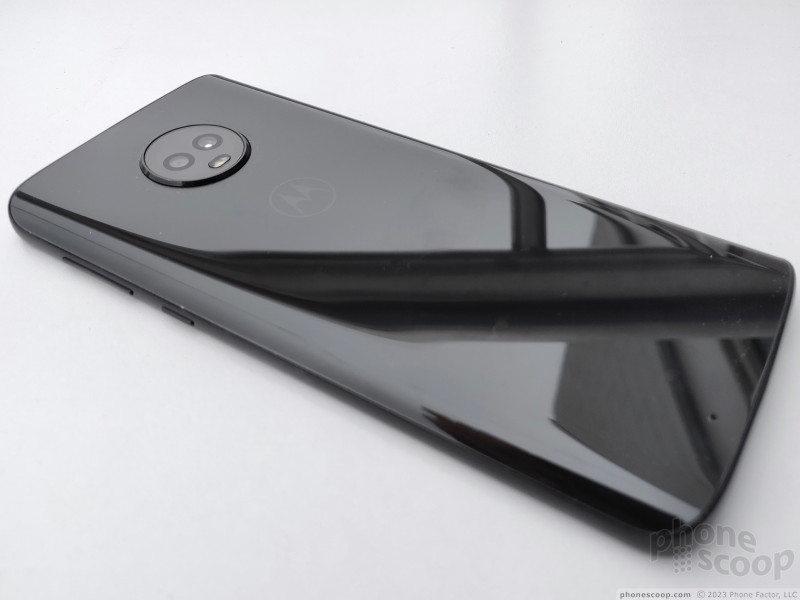














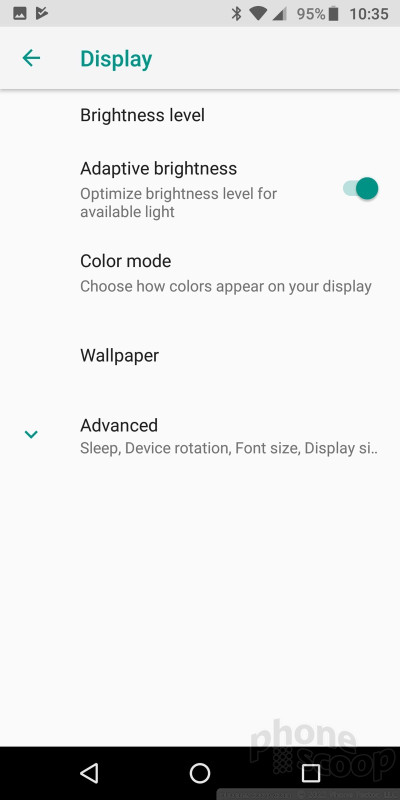





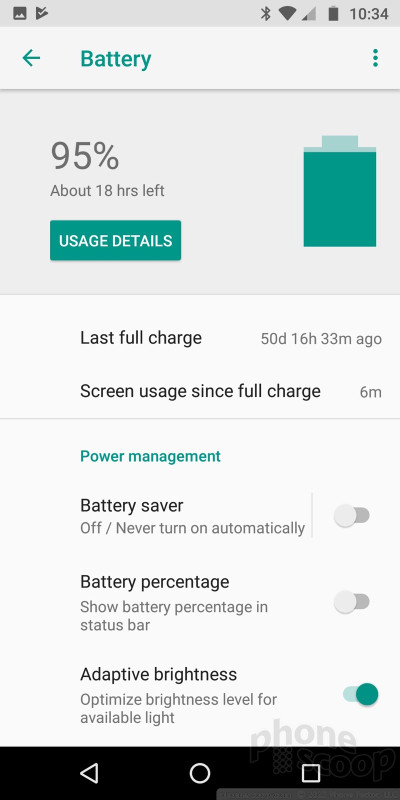




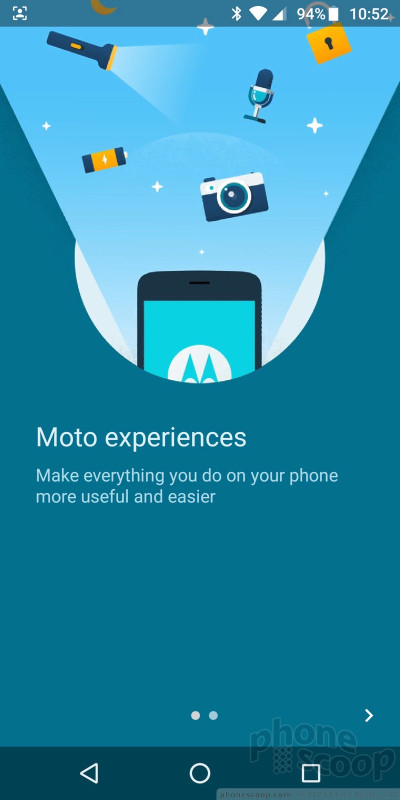





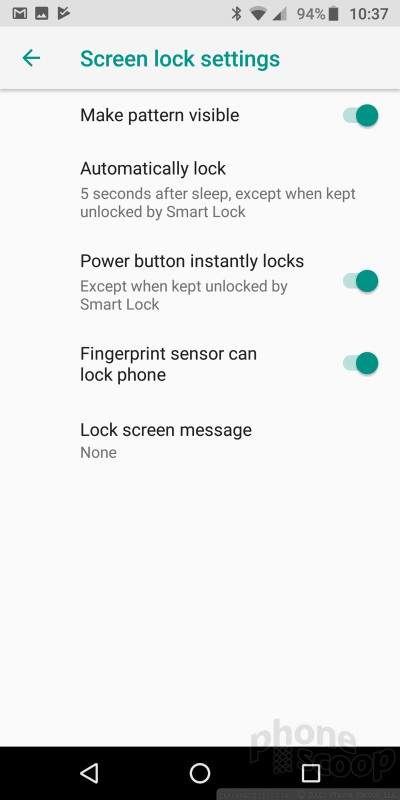









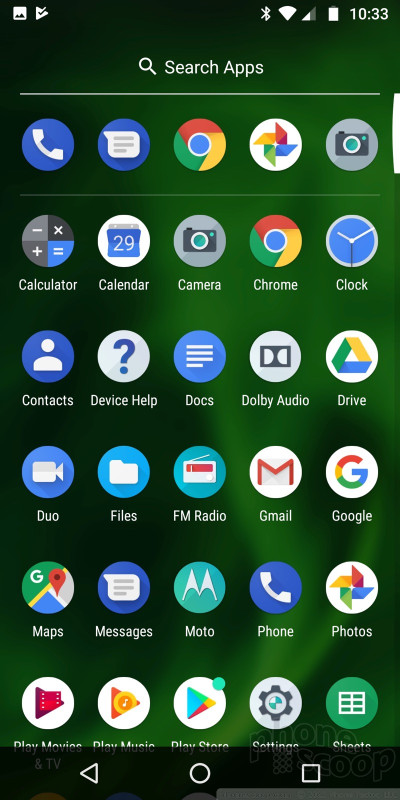





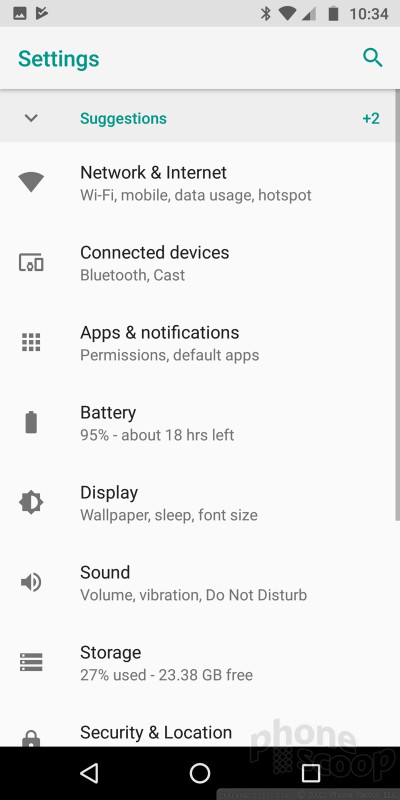





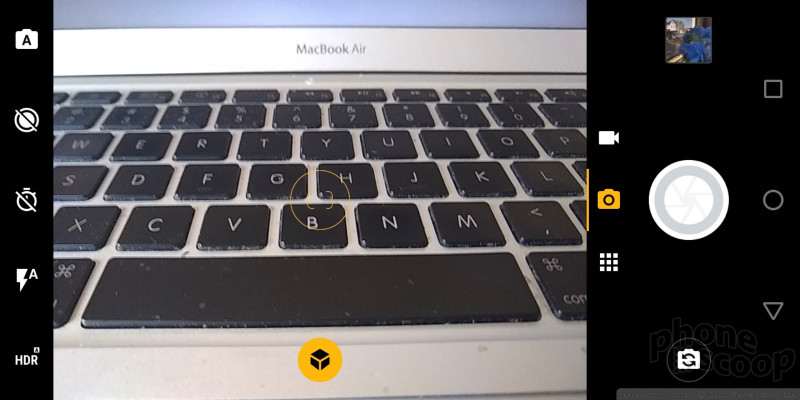





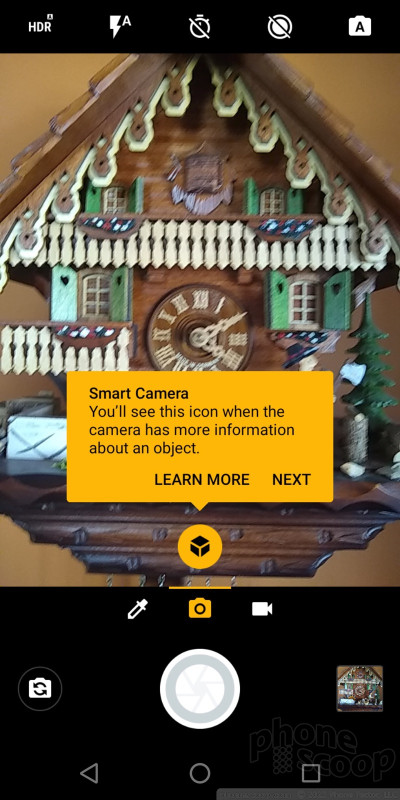










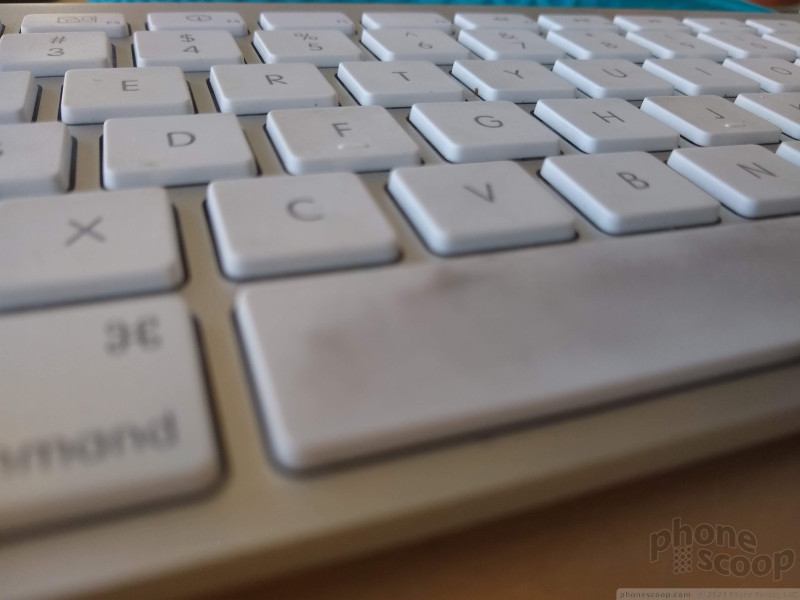



















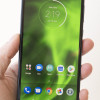 Hands On with the Moto g6
Hands On with the Moto g6
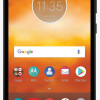 Verizon to Carrry Motorola’s Latest Phones On Prepaid and Postpaid
Verizon to Carrry Motorola’s Latest Phones On Prepaid and Postpaid
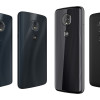 Motorola Updates Affordable Lineup for 2018
Motorola Updates Affordable Lineup for 2018
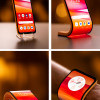 Motorola Shows Off New Concepts in AI, Foldables
Motorola Shows Off New Concepts in AI, Foldables
 Motorola Moto g6
Motorola Moto g6







